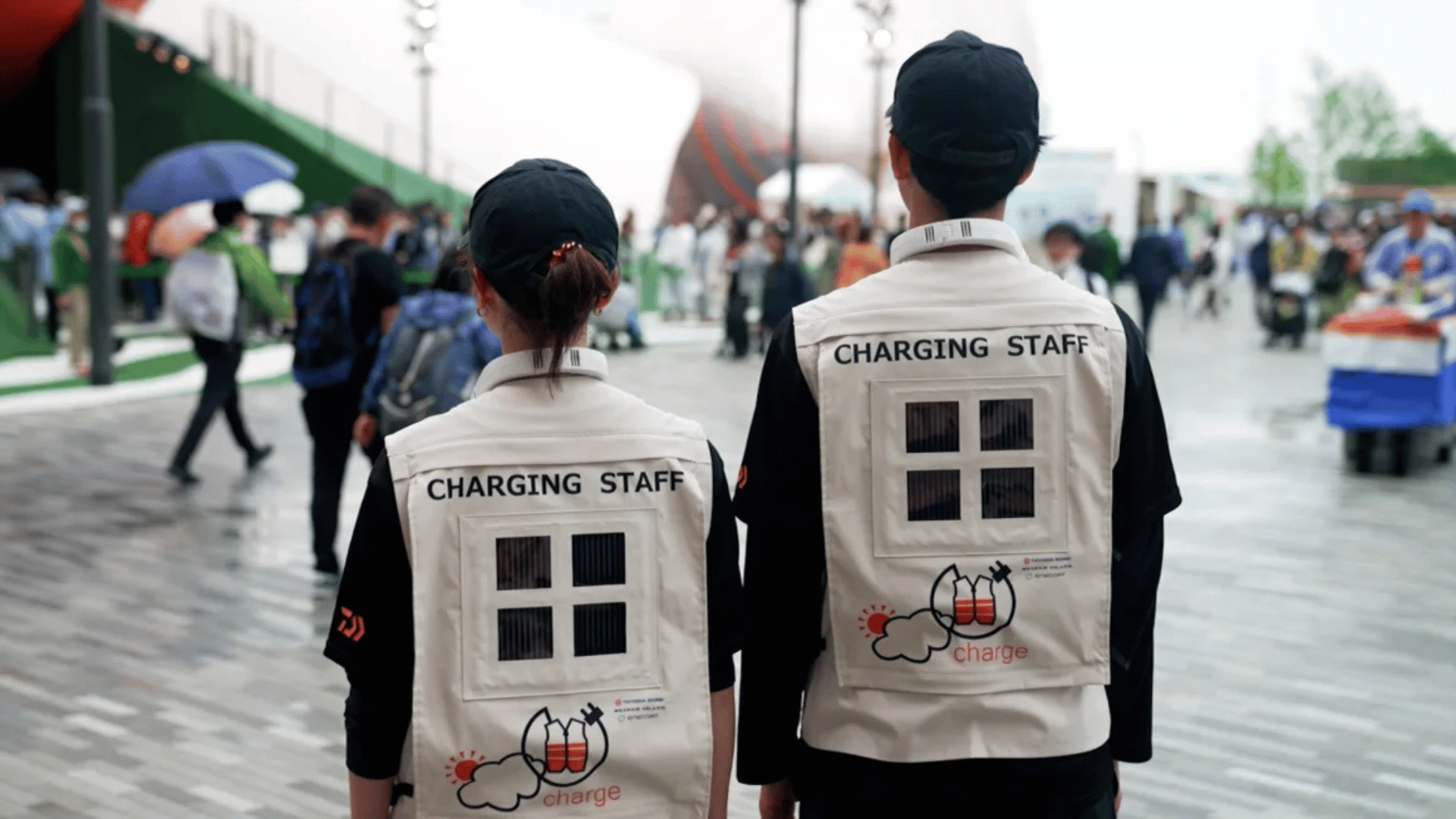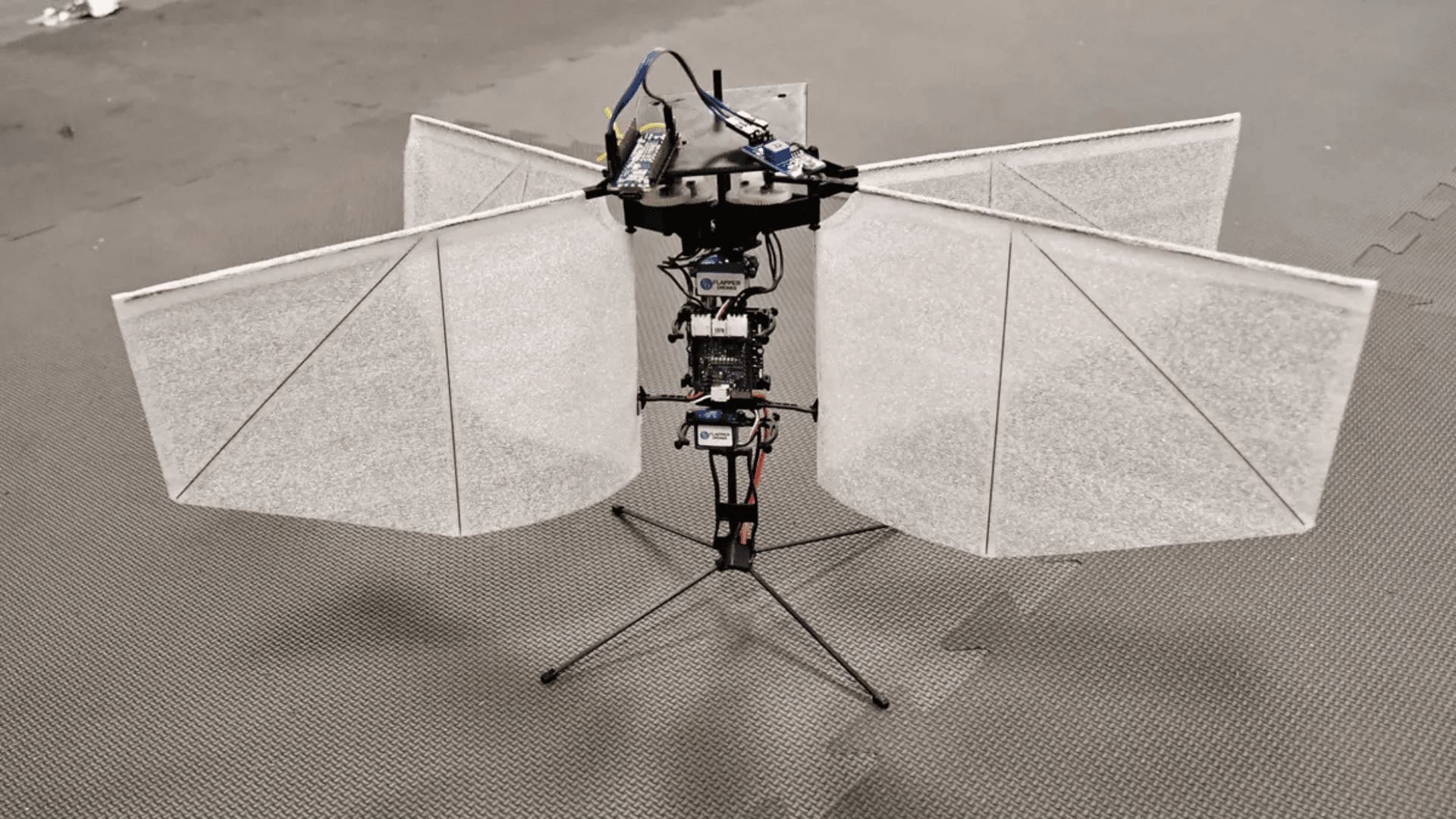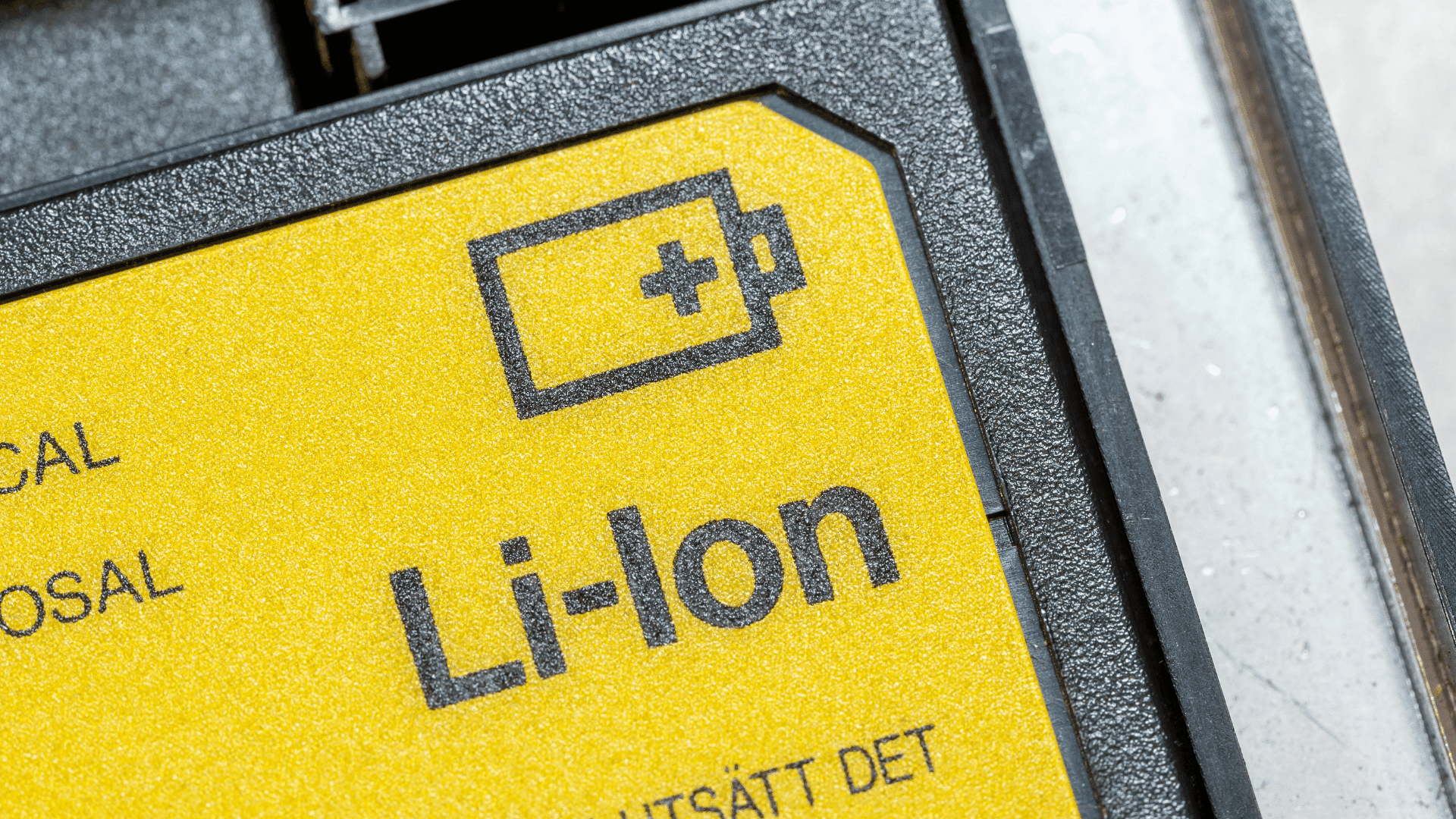The summer sun beat down at Expo 2025 in Osaka, Japan, where staff kept cool with solar-powered utility vests. These innovative vests are fitted with ultra-thin, flexible solar panels that power neck fans. Toyoda Gosei, in collaboration with Enecoat Technologies and Seiren, developed the vests.
A New Type of Solar Cell

Silicon panels have traditionally dominated the flexible solar cell market. However, these new “solar films” are made from perovskites, a family of crystal structures. Perovskite solar cells weigh less than four grams and are lighter than a sheet of paper. In addition, they’re reportedly cheaper to produce and absorb a wide range of light. For example, researchers say they can absorb visible and near-infrared.
Shinichiro Fuki, director of the Toyoda Gosei team that developed the vest, says the solar films charge “under shade, in rainy and cloudy weather.”
Laboratory settings showed 21.2% efficiency and converted a significant portion of solar energy into electricity. Researchers use Expo 2025 as a real-world test site, gathering data daily in various weather conditions.
Fuki describes integrating perovskite solar cells into wearables as a “world’s first initiative.” He hopes that “people who work in an environment where they cannot easily obtain power without solar power will use and wear it.” Perovskites can either be found in nature or created in a lab. Reportedly, Japanese researchers first demonstrated their use in solar cells in 2009.
Researchers note that one of the significant advantages of perovskites is their ability to generate power in either indoor or low-light conditions. For example, they can harness power from indoor LED or fluorescent lights.
Additionally, they’re flexible and lightweight, allowing researchers to install them in previously impossible locations.
However, there are challenges and hurdles ahead. Perovskites reportedly degrade faster when exposed to heat, moisture, or UV rays. They could potentially lose efficiency in a matter of weeks.
“Everybody right now is working on stability,” said Dr. Hashini Perera, a research fellow at the University of Surrey. “That’s the only thing that perovskites lack and still don’t have in comparison to silicon.”







